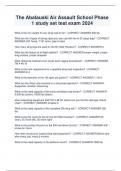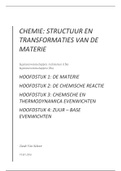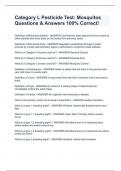Exam (elaborations)
Test Bank for Anatomy and Physiology, 10th Edition by Patton
Enhance your study experience with this comprehensive Test Bank for "Anatomy and Physiology, 10th Edition" by Patton. This resource includes a variety of questions and answers designed to deepen your understanding of human anatomy and physiology concepts as covered in the textbook. Key Features:...
[Show more]












